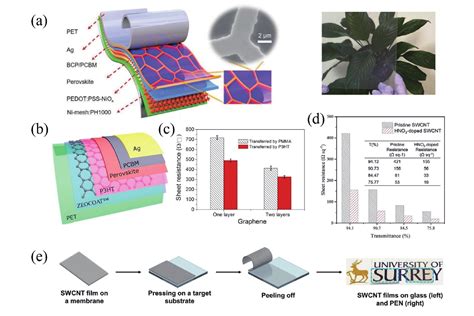Imagine a world where space exploration relies on organic solar cells—lightweight, flexible, and resilient to radiation. This groundbreaking technology is at the forefront of scientific research, paving the way for sustainable energy solutions beyond our atmosphere.
“Silicon semiconductors aren’t stable in space because of proton irradiation coming from the sun,”
explained Yongxi Li, a key figure in a recent study published in Joule. As an associate research scientist in electrical and computer engineering at the University of Michigan during the research phase, Li delved into the intricate molecular reactions triggered by radiation exposure that can impact solar cell performance.
Traditionally, space missions have leaned towards gallium arsenide due to its efficiency and proton damage resistance. However, this material comes with drawbacks—it’s costly and lacks flexibility compared to organic solar cells. These lightweight alternatives are gaining traction for their adaptability and durability in harsh cosmic conditions.
The study uncovered fascinating insights into how different organic solar cell compositions respond to proton bombardment over extended periods. Small-molecule-based cells emerged unscathed even after three years of rigorous radiation exposure. In contrast, polymer-based cells suffered significant efficiency losses due to structural damage caused by proton-induced chain cleavage.
“We found that protons cleave some of the side chains, and that leaves an electron trap that degrades solar cell performance,”
noted Stephen Forrest, a distinguished engineering professor at U-M and lead author of the study. These electron traps impede the flow of electrons essential for generating electricity within the solar cell structure.
Despite these challenges, there is hope on the horizon. Thermal annealing—a process involving heating the solar cells—shows promise in mitigating these electron traps by repairing damaged molecular bonds. Forrest hinted at innovative approaches like filling these traps with alternative atoms to eliminate performance-degrading issues entirely.
A tantalizing prospect arises as researchers contemplate whether sunlight-induced self-healing mechanisms could operate effectively in space’s vacuum environment. The resilience of such repair processes under prolonged mission durations remains a critical question awaiting exploration—a puzzle waiting to be solved among distant stars.
Li’s future endeavors as an incoming associate professor at Nanjing University will likely delve deeper into optimizing organic solar cell design for enhanced reliability and longevity in space applications. With backing from Universal Display Corp and funding from the U.S. Office of Naval Research, this research marks a significant step towards revolutionizing space technology.
The collaborative effort behind this innovation spanned multiple facilities—from constructing devices at the Lurie Nanofabrication Facility to subjecting them to rigorous testing at the Michigan Ion Beam Laboratory. Through meticulous analysis at the Michigan Center for Materials Characterization, valuable insights were gleaned to drive further advancements in this pioneering field.
As patent protection processes unfold with support from U-M Innovation Partnerships, commercialization prospects loom large on the horizon. Universal Display Corp has already secured licensing rights for this cutting-edge technology—a testament to its potential impact on future space missions.
In closing thoughts tinged with cautious optimism,
“Forrest has a financial interest in Universal Display Corp.”
This disclosure underscores not only personal stakes but also highlights broader industry collaborations shaping tomorrow’s technological landscape—an ecosystem where academia meets enterprise in pursuit of innovation-driven progress.

